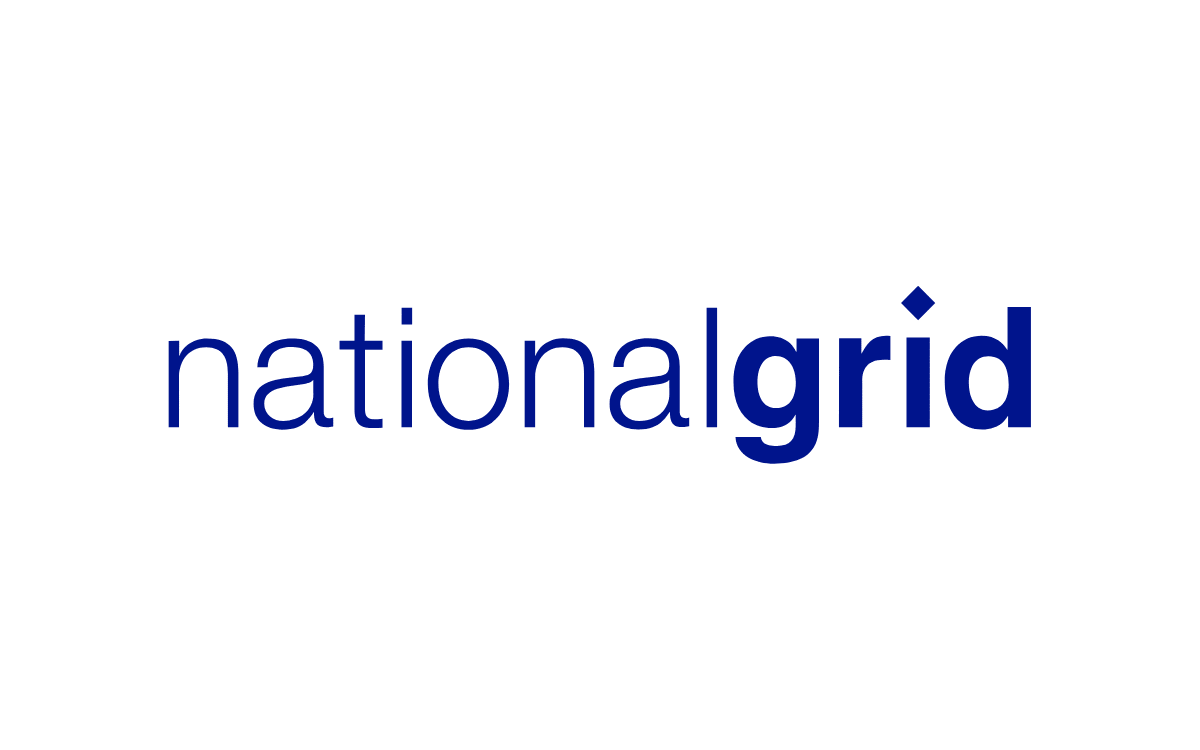Global Talent Fund – Concern over exclusion of Northern Universities
New analysis by the Northern Powerhouse Partnership and research experts in the North of England has raised serious questions about how UK Research and Innovation (UKRI) selected recipients for its £54 million Global Talent Fund, designed to bring top international researchers to the UK.
According to UKRI’s own criteria obtained via a Freedom of Information request institutions were eligible if they met three thresholds:
- £5m or more in ERC/MSCA international research funding (May 2022–Dec 2024)
- At least 35% of academic staff being international (HESA 2023/24 data)
- At least 5% of staff on UKRI-endorsed Global Talent visas (no public data available)
While the intention behind the scheme is welcome, the execution appears to have disproportionately excluded high-performing institutions in the North of England, despite their strong track record on international research.
The detailed data and analysis underpinning this briefing can be found in the annex.
What the data shows
Criteria 1: International research funding (£5m+ ERC/MSCA)
Seven Northern universities met the £5m threshold: Manchester, Leeds, York, Newcastle, Lancaster, Sheffield, and Durham. None were selected.
Criteria 2: International staff (% vs. total)
Out of the Northern universities, Durham and Lancaster both cleared the 35% threshold (with both criteria 1 and 2 for funding, but being excluded). Manchester missed out by 0.3%, and otherwise would have qualified on this and Criteria 1 where it performed particularly strongly compared to many of those universities who were funded. The rules were varied for Cardiff, which only has 32.1% of international staff.
The metric also used penalises larger universities that may have more international staff overall. This is because it judges institutions on percentage, not total number.
Criteria 3: Global Talent visas (% of staff)
No public data is available, making this criterion difficult to scrutinise. However, since it’s based on a percentage of staff, it also disadvantages larger universities.
Durham would need ∼145 Global Talent visa holders to meet the 5% threshold; Manchester would need around ∼265; Bath for example would only need ∼81.
Why this undermines innovation in the North
The result is a Global Talent Fund that contains no universities from the North of England, despite multiple Northern institutions ranking ahead of those selected based on the objective data.
In our ‘Innovation for Impact‘ report, we called for targeted investment in Northern research hubs to drive national growth. By excluding institutions like Durham, Manchester, Lancaster, Newcastle and Sheffield, this scheme misses an opportunity to build on existing centres of excellence that contribute significantly to UK innovation.
We also warned against the dangers of “place-blind” policymaking which inadvertently rewards already advantaged institutions while overlooking those with equal or greater potential. The GTF decisions exemplify this risk in practice.
The Northern Powerhouse Partnership has repeatedly welcomed the Government’s stated ambition to promote regional growth and narrow the geographic disparities that exist across the country. A funding decision that overlooks the North’s globally competitive research base sends the wrong message about the UK’s commitment to inclusive innovation.
Henri Murison, Chief Executive of the Northern Powerhouse Partnership, said:
“The principle behind the Global Talent Fund is absolutely right. Attracting world-class researchers to the UK is vital to the long-term competitiveness of our innovation ecosystem. But it’s deeply disappointing that not a single Northern university will benefit – especially when the selection criteria were both arbitrary and inconsistently applied.
“The North isn’t pleading, it’s simply asking not to be overlooked in favour of special treatment for nations like Wales, which, while important, are far smaller in scale. The North remains the UK’s only credible economic counterweight to London and the greater South East.
“If the government is serious about delivering growth across every part of the country, it cannot allow UKRI, the intermediary between government and our world-class research councils, to stand in the way of that ambition.”
Annex: Comparative Analysis: Research-Intensive Northern Universities vs Global Talent Fund Recipients
This analysis compares research-intensive Northern Universities with 10 of the institutions awarded funding under the Global Talent Visa scheme. John Innes Centre and MRC Laboratory of Molecular Biology have been excluded due to a lack of available data.
Summary
Criteria 1 data demonstrates that outside of the Golden Triangle universities, in terms of competitive ERC funding, the performance of the Northern universities is broadly comparable with other universities selected for Global Talent Funding.
In terms of Marie Skłodowska-Curie Actions the Northern universities are also broadly comparable with the non-GT institutions receiving funding.
The ERC/MCSA criteria is not corrected for university size e.g. larger institutions will have larger ERC and MCSA returns.
Criteria 2 data demonstrates that only Durham and Lancaster meet the arbitrary cutoff of 35% of academics being international (notable Cardiff who are funded, also do not meet the cutoff).
It is worth noting that the sector average (total international academics as a proportion of the total) is 33% – using this as the cutoff would see two more Northern universities be eligible.
When sorted by total numbers of academics, the Northern universities are far more comparable to other funded institutions.
Criteria 3 has no publicly available data.
Conclusion
Under the criteria set out, research-intensive Northern universities are not well-placed to receive funding due to only 2 meeting the cut-offs for proportion of international academics and these 2 universities being less well-ranked in the ERC/MCSA funding (mostly due to scale, as this metric is not corrected for university size).
A small shift in the Criteria 2 metric to the sectoral average would see 2 additional Northern universities qualify, including Manchester, who rank strongly in ERC and MCSA data.
The impact of Criteria 3 data is unknown and may or may not add or detract from the case.
However, as many of the criteria are arbitrary, a more nuanced approach, with a sensible place-based approach ought to be possible.
Criteria 1
Successfully receiving and using competitive international funding, assessed by the amount of European Research Council and Marie Skłodowska-Curie Actions funding received. The organisation must have reached a minimum of £5m of ERC/MSRC funding (combined) between May 2022-December 2024.
Data Sources: ERC Horizon Europe Dashboard for 2024 data, Gateway to Research for EU Guarantee Scheme funding for May 2022 to end of 2023. To note: it was not possible to distinguish different schemes under the EU Guarantee, so all grants were included.
Universities who have been awarded funding and research-intensive Northern universities are compared and ranked according to the total value of ERC and EU Guarantee Scheme grants e.g. competitive ERC funding. The Northern universities are broadly comparable to the non-Golden Triangle universities receiving the award.
| Institution | ERC # | ERC Value | Guarantee # | Guarantee Value | Total # | Total Value |
|---|---|---|---|---|---|---|
| Oxford | 11 | £19,000,000 | 89 | £41,900,000 | 100 | £60,900,000 |
| Imperial | 14 | £12,000,000 | 84 | £40,100,000 | 98 | £52,100,000 |
| Cambridge | 20 | £21,000,000 | 62 | £23,500,000 | 82 | £44,500,000 |
| Birmingham | 4 | £7,000,000 | 59 | £27,400,000 | 63 | £34,400,000 |
| Manchester | 6 | £6,000,000 | 51 | £19,000,000 | 57 | £25,000,000 |
| Warwick | 3 | £5,000,000 | 39 | £16,000,000 | 42 | £21,000,000 |
| Southampton | 2 | £4,000,000 | 35 | £16,400,000 | 37 | £20,400,000 |
| Newcastle | 1 | £2,000,000 | 33 | £14,600,000 | 34 | £16,600,000 |
| Leeds | 35 | £14,200,000 | 35 | £14,200,000 | ||
| Strathclyde | 1 | £2,000,000 | 30 | £10,000,000 | 31 | £12,000,000 |
| York | 4 | £6,000,000 | 15 | £5,200,000 | 19 | £11,200,000 |
| Cardiff | 2 | £4,000,000 | 14 | £6,300,000 | 16 | £10,300,000 |
| QUB | 1 | £2,000,000 | 26 | £7,900,000 | 27 | £9,900,000 |
| Lancaster | 1 | £150,000 | 21 | £8,800,000 | 22 | £8,950,000 |
| Sheffield | 20 | £8,700,000 | 20 | £8,700,000 | ||
| Durham | 2 | £3,000,000 | 5 | £2,000,000 | 7 | £5,000,000 |
| Bath | 1 | £1,000,000 | 9 | £3,900,000 | 10 | £4,900,000 |
| Liverpool | 12 | £4,600,000 | 12 | £4,600,000 |
Marie Skłodowska-Curie Actions again demonstrate that Northern universities are broadly comparable in terms of the number of actions when compared to the non-Golden Triangle universities.
| Institution | MCSA |
|---|---|
| Cambridge | 97 |
| Imperial | 87 |
| Oxford | 85 |
| Birmingham | 40 |
| Warwick | 38 |
| Manchester | 35 |
| QUB | 34 |
| Sheffield | 32 |
| Durham | 31 |
| Liverpool | 31 |
| Lancaster | 27 |
| Leeds | 24 |
| Southampton | 23 |
| Newcastle | 23 |
| Bath | 19 |
| Cardiff | 13 |
| Strathclyde | 10 |
| York | 3 |
Criteria 2
Recruiting and retaining international researchers, assessed by the percentage of academic staff that are classed as international according to Higher Education Statistics Agency (HESA*). The organisation must have reached a minimum of 35% of academic staff classed as international, in the academic year 2023/24.
Data Source: HESA data on nationality of academic staff (either UK, EU, or non-EU) for 2023/24. Institutions with under 500 academics staff have been removed.
Only 2 Northern universities are above the 35% cut-off in the criteria for minimal proportion of academic staff that are international. It should be noted that University of Cardiff, also do not qualify, despite being funded, under these criteria. Sectoral average is 33% (e.g. total number of international academics as a proportion of total academics in the dataset).
| HE provider | UK | EU | Non-EU | Un-known | Total | ||
| 1 | London School of Economics and Political Science | 640 | 615 | 660 | 5 | 1,920 | 66.4% |
| 2 | SOAS University of London | 265 | 100 | 245 | 5 | 615 | 56.1% |
| 3 | Cranfield University | 370 | 175 | 260 | 0 | 805 | 54.0% |
| 4 | Imperial College of Science, Technology and Medicine | 2,120 | 1,185 | 1,230 | 5 | 4,540 | 53.2% |
| 5 | The University of Cambridge | 2,835 | 1,465 | 1,770 | 20 | 6,090 | 53.1% |
| 6 | Heriot-Watt University | 450 | 240 | 270 | 0 | 965 | 52.8% |
| 7 | Queen’s University Belfast | 1,015 | 670 | 425 | 15 | 2,120 | 51.7% |
| 8 | Queen Mary University of London | 1,880 | 905 | 960 | 0 | 3,745 | 49.8% |
| 9 | The University of Edinburgh | 4,225 | 1,940 | 2,230 | 40 | 8,430 | 49.5% |
| 10 | Ulster University* | 725 | 555 | 155 | 5 | 1,440 | 49.3% |
| 11 | University College London | 5,290 | 2,510 | 2,510 | 40 | 10,350 | 48.5% |
| 12 | The University of Essex | 765 | 315 | 435 | 45 | 1,560 | 48.1% |
| 13 | The Institute of Cancer Research | 345 | 180 | 135 | 0 | 660 | 47.7% |
| 14 | King’s College London | 3,285 | 1,470 | 1,445 | 0 | 6,200 | 47.0% |
| 15 | The University of Warwick | 2,080 | 635 | 1,065 | 0 | 3,780 | 45.0% |
| 16 | Brunel University London | 815 | 265 | 390 | 5 | 1,475 | 44.4% |
| 17 | London School of Hygiene and Tropical Medicine | 580 | 175 | 290 | 0 | 1,050 | 44.3% |
| 18 | Kaplan International Colleges U.K. Limited* | 290 | 50 | 175 | 0 | 510 | 44.1% |
| 19 | University of Durham | 1,615 | 520 | 755 | 5 | 2,895 | 44.0% |
| 20 | The University of Glasgow | 3,245 | 1,065 | 1,485 | 0 | 5,795 | 44.0% |
| 21 | The University of St. Andrews | 760 | 280 | 305 | 0 | 1,345 | 43.5% |
| 22 | The University of Oxford | 2,960 | 1,355 | 1,710 | 1,195 | 7,220 | 42.5% |
| 23 | Birkbeck College | 515 | 205 | 150 | 5 | 875 | 40.6% |
| 24 | The University of Southampton | 1,685 | 480 | 635 | 0 | 2,800 | 39.8% |
| 25 | The University of Surrey | 1,000 | 285 | 375 | 0 | 1,660 | 39.8% |
| 26 | The University of Sussex | 1,225 | 365 | 425 | 15 | 2,035 | 38.8% |
| 27 | The University of Bath | 995 | 305 | 315 | 0 | 1,615 | 38.4% |
| 28 | The University of Aberdeen | 1,045 | 305 | 345 | 0 | 1,695 | 38.3% |
| 29 | The University of Reading | 1,015 | 280 | 350 | 0 | 1,645 | 38.3% |
| 30 | City, University of London | 1,140 | 365 | 345 | 5 | 1,855 | 38.3% |
| 31 | The University of Birmingham* | 2,580 | 680 | 920 | 20 | 4,205 | 38.0% |
| 32 | Aston University | 625 | 145 | 240 | 0 | 1,015 | 37.9% |
| 33 | The University of Kent | 800 | 245 | 250 | 10 | 1,305 | 37.9% |
| 34 | The University of Strathclyde | 1,275 | 350 | 385 | 0 | 2,005 | 36.7% |
| 35 | The University of Lancaster | 1,485 | 340 | 495 | 0 | 2,320 | 36.0% |
| 36 | The University of Greenwich | 795 | 185 | 260 | 0 | 1,245 | 35.7% |
| 37 | The University of Bristol | 2,440 | 620 | 710 | 0 | 3,770 | 35.3% |
| 38 | The University of Exeter | 2,480 | 535 | 830 | 70 | 3,915 | 34.9% |
| 39 | The University of Manchester | 3,465 | 860 | 985 | 0 | 5,310 | 34.7% |
| 40 | The University of York* | 1,725 | 375 | 545 | 5 | 2,655 | 34.7% |
| 41 | Royal Holloway and Bedford New College | 820 | 250 | 185 | 0 | 1,260 | 34.5% |
| 42 | University of Nottingham* | 2,530 | 520 | 805 | 0 | 3,855 | 34.4% |
| 43 | Edinburgh Napier University | 675 | 165 | 185 | 5 | 1,025 | 34.1% |
| 44 | Arden University* | 510 | 70 | 195 | 0 | 780 | 34.0% |
| 45 | The University of Dundee | 990 | 230 | 270 | 5 | 1,490 | 33.6% |
| 46 | Loughborough University | 1,130 | 240 | 315 | 5 | 1,690 | 32.8% |
| 47 | The University of Liverpool | 2,235 | 585 | 505 | 0 | 3,325 | 32.8% |
| 48 | The University of Leicester | 1,320 | 265 | 375 | 0 | 1,960 | 32.7% |
| 49 | Cardiff University | 2,675 | 540 | 735 | 25 | 3,975 | 32.1% |
| 50 | Goldsmiths College | 855 | 220 | 180 | 5 | 1,260 | 31.7% |
| 51 | The University of Westminster | 1,360 | 380 | 245 | 0 | 1,980 | 31.6% |
| 52 | The University of Leeds | 2,700 | 515 | 725 | 0 | 3,940 | 31.5% |
| 53 | Newcastle University | 2,080 | 420 | 525 | 0 | 3,030 | 31.2% |
| 54 | The University of East London | 745 | 145 | 210 | 40 | 1,140 | 31.1% |
| 55 | The University of Sheffield | 2,615 | 445 | 735 | 0 | 3,795 | 31.1% |
| 56 | Middlesex University | 570 | 140 | 110 | 0 | 820 | 30.5% |
| 57 | London South Bank University* | 765 | 140 | 225 | 85 | 1,215 | 30.0% |
| 58 | De Montfort University | 1,070 | 115 | 335 | 5 | 1,525 | 29.5% |
| 59 | Coventry University | 1,715 | 220 | 490 | 0 | 2,425 | 29.3% |
| 60 | Bournemouth University | 725 | 120 | 170 | 0 | 1,015 | 28.6% |
There are 60 more data points to this table.
When the data is ordered by total number of international academics, however, the picture is somewhat different, with the Northern universities being broadly comparable to non-Golden Triangle universities:
| University | Total International Academics |
| University College London | 5020 |
| The University of Edinburgh | 4170 |
| The University of Cambridge | 3235 |
| The University of Oxford | 3065 |
| King’s College London | 2915 |
| The University of Glasgow | 2550 |
| Imperial College of Science, Technology and Medicine | 2415 |
| Queen Mary University of London | 1865 |
| The University of Manchester | 1845 |
| The University of Warwick | 1700 |
| The University of Birmingham* | 1600 |
| The University of Exeter | 1365 |
| The University of Bristol | 1330 |
| University of Nottingham* | 1325 |
| London School of Economics and Political Science | 1275 |
| University of Durham | 1275 |
| Cardiff University | 1275 |
| The University of Leeds | 1240 |
| The University of Sheffield | 1180 |
| The University of Southampton | 1115 |
| Queen’s University Belfast | 1095 |
| The University of Liverpool | 1090 |
| Newcastle University | 945 |
| The University of York* | 920 |
| The University of Lancaster | 835 |
| The Open University* | 820 |
| The University of Sussex | 790 |
| University of the Arts, London | 755 |
| The University of Essex | 750 |
| The University of Strathclyde | 735 |
| Ulster University* | 710 |
Criteria 3
Use of the Global Talent visa, which is the UK’s primary visa for researchers and specialists, assessed by the percentage of UKRI-endorsed Global Talent visa holders compared to total academic staff numbers according to HESA*. The organisations must have had a minimum of 5% of UKRI-endorsed Global Talent visa holders. GTV endorsement data used is from FY 2019/20 – FY 2024/25.
No information is available on this criteria in the public domain.
Media Enquiries
For media enquiries and interview requests, please contact the press office on:
Get involved...
There are a number of ways you can help drive forward the Northern Powerhouse agenda.
Our Members
Working with businesses and organisations across the North
















